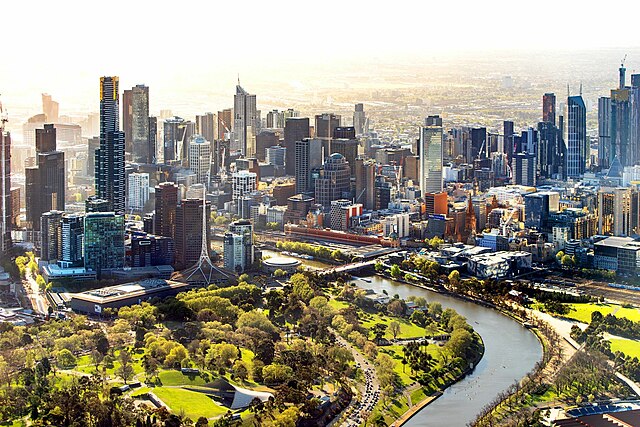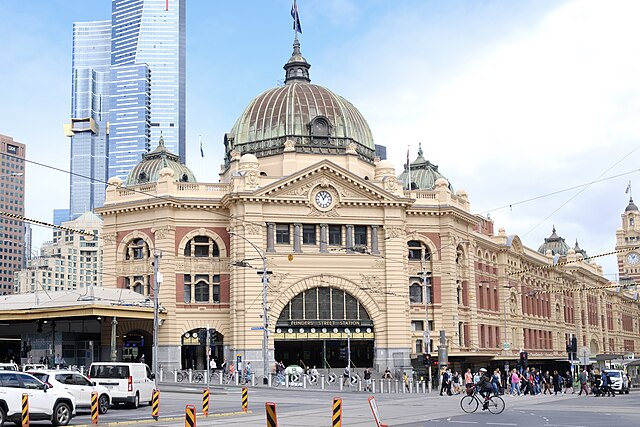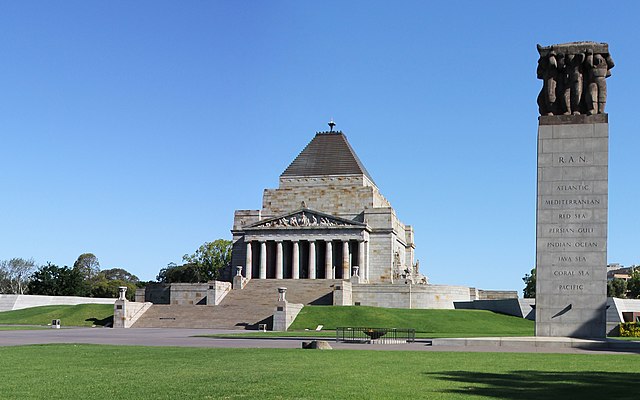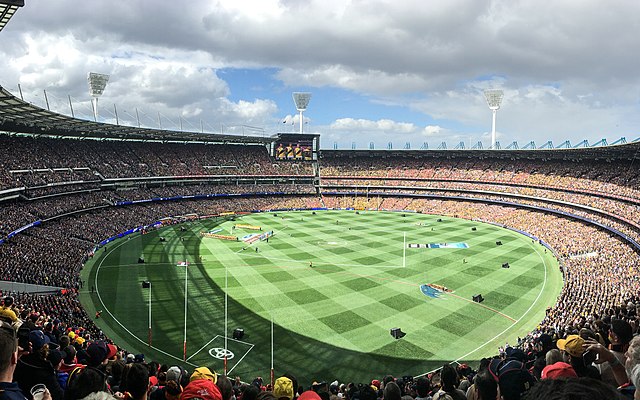Royal Exhibition Building
The Royal Exhibition Building is a World Heritage-listed building in Melbourne, Victoria, Australia, built in 1879–1880 as part of the international exhibition movement, which presented over 50 exhibitions between 1851 and 1915 around the globe. The building sits on approximately 26 hectares, is 150 metres (490 ft) long and is surrounded by four city streets. It is at 9 Nicholson Street in the Carlton Gardens, flanked by Victoria, Carlton and Rathdowne Streets, at the north-eastern edge of the central business district. It was built to host the Melbourne International Exhibition in 1880–81, and then hosted the even larger Centennial International Exhibition in 1888, and the formal opening of the first Parliament of Australia in 1901. The building is representative of the money and pride Victoria had in the 1870s. Throughout the 20th century smaller sections and wings of the building were subject to demolition and fire; however, the main building, known as the Great Hall, survived.

The Royal Exhibition Building, with its fountain on the southern or Carlton Gardens side.
Aerial view of the Carlton Gardens, where the building is located.
Lithograph of the building in 1880. Note the rear wings which no longer exist.
The Big Picture, opening of the Parliament of Australia, 9 May 1901, by Tom Roberts
Melbourne is the capital and most populous city of the Australian state of Victoria, and the second-most populous city in Australia. Its name generally refers to a 9,993 km2 (3,858 sq mi) metropolitan area also known as Greater Melbourne, comprising an urban agglomeration of 31 local municipalities, although the name is also used specifically for the local municipality of City of Melbourne based around its central business area.
Image: Melburnian Skyline
Image: Flinders Street Station Melbourne March 2021
Image: Shrine of Remembrance 1 (cropped)
Image: 2017 AFL Grand Final panorama during national anthem (cropped)








